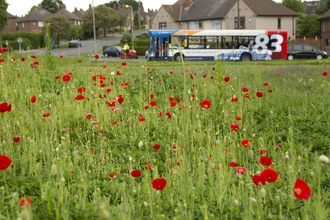Rose Chafer ©Derek Moore
Rose chafer
The rose chafer can be spotted on garden flowers, as well as in grassland, woodland edges and scrub.
Scientific name
Cetonia aurataWhen to see
May to OctoberSpecies information
Category
Statistics
Length: 1.7-2.0cmConservation status
Common.


